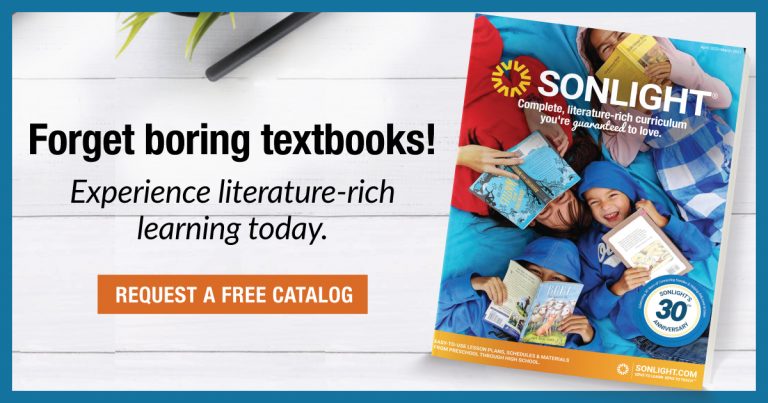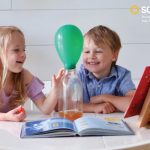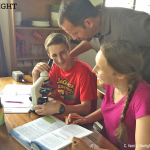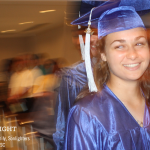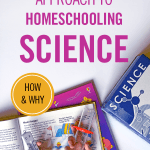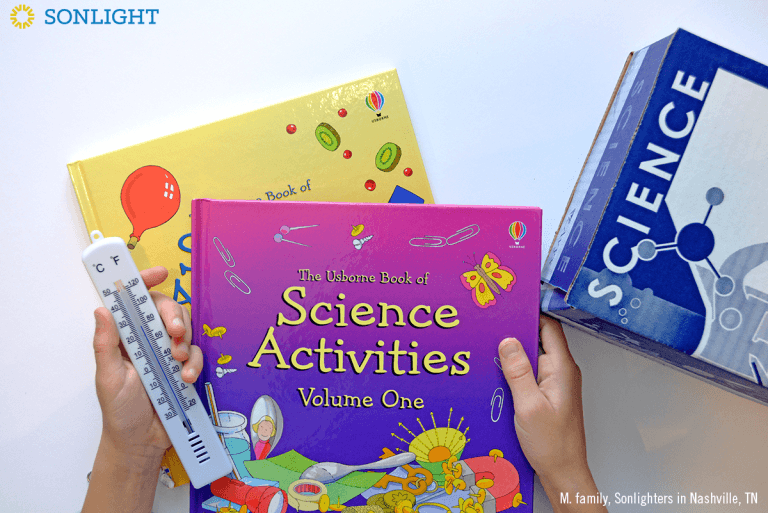
Sonlight for history, literature, and Bible—sure. But Sonlight for science?
Absolutely!
A literature-based approach introduces a feast of discovery, allowing elementary- and middle-school students to uncover a wide range of wild and wondrous scientific concepts.
Each Science level from A (grades K-2) to H (grades 7-9) integrates multiple facets:
- different disciplines
- hands-on experiments
- a spiral approach
- the scientific method
Science A, for example, introduces young children to the themes of biology, botany, and physics; Science D revisits biology, and adds in taxonomy and anatomy. And when Levels A-H are completed, Sonlight offers phenomenal college-prep level lab science courses for high school, too.
A Literature-Based Approach Makes Science Accessible
Using real-life books for science education sends the message to kids that science isn’t something esoteric, found only in textbooks and laboratories; far from it! Science is everywhere, every day. In reading snippets from
- living books,
- encyclopedias, and
- biographies,
while also
- creating projects from household materials,
- devising experiments,
- following the scientific method, and
- practicing powers of observation,
we show kids they can glean gems of scientific delight from the pages of books, as well as from our own backyards. Science is for everyone, not just highly-specialized experts.
And Sonlight science offers multi-sensory learning, too. Literature-based doesn’t mean books only. In Science A through E, DVD tutorials guide you through how to conduct hands-on experiments. And in Science D and F, students sing through kingdoms, classifications, and anatomy with cleverly-arranged Lyrical Life Science songs.
A Literature-Based Approach Teaches Kids to Think Critically and Develop a Worldview
Textbook authors wrap up chapters in neat summaries, providing suggested conclusions. This is necessary in college-prep lab courses, but before higher-level studies, spreading a study of science through multiple titles teaches kids to
- engage with the material connected
- recognize connections between diverse topics
- see common themes presented in different ways
- discern scientific fact from scientific theory
- sort through multiple perspectives
When kids begin noticing the same principles and ideas presented in the lesson’s encyclopedia reading, part of a biography, and a selection from an additional assignment, they begin seeing the thread of purpose woven throughout all of science. That perspective is so valuable! The skills of discernment and critical thinking will help students long after their days as a student are over.
And I always appreciate Sonlight’s willingness to take on controversial topics—like origins—by allowing families to tackle the subjects head-on with the same kinds of books kids will encounter in the real world, rather than teaching these through rewritten, filtered resources. (Each Instructor’s Guide offers helpful notes, discussion suggestions, and general guidance to aid parents in talking through tough points, too.)
But Sonlight Science Jumps Around Too Much!
From time to time, I encounter curious questions about the multi-discipline format of Sonlight science. Most of us are accustomed to the model typically used in high school and college classrooms: focusing on one discipline—in depth—for an entire year. Because of this, we sometimes expect elementary and middle-school science programs to follow the same approach. While there is a place for such focused study, there’s also much to be said for a multi-genre method, especially in the years before high school.
The most obvious benefit is exposure. Following the Sonlight Science scope and sequence, kids will gain familiarity with an astronomical (pun intended) number of different scientific subject areas prior to high school:
- biology
- botany
- physics
- zoology
- astronomy
- geology
- meteorology
- mechanical technology
- taxonomy
- human anatomy
- electricity
- magnetism
- health
- medicine
- origins
- conservation
- robotics,
- technology
While my daughter has a special affinity for pill bugs and the human digestive system, the delightful array of topics in Sonlight Science also helped her uncover a previously-untapped love for carnivorous plants (Science A), the planet Mars (Science B), and those hilariously powerful birds, cassowaries (Science C.)
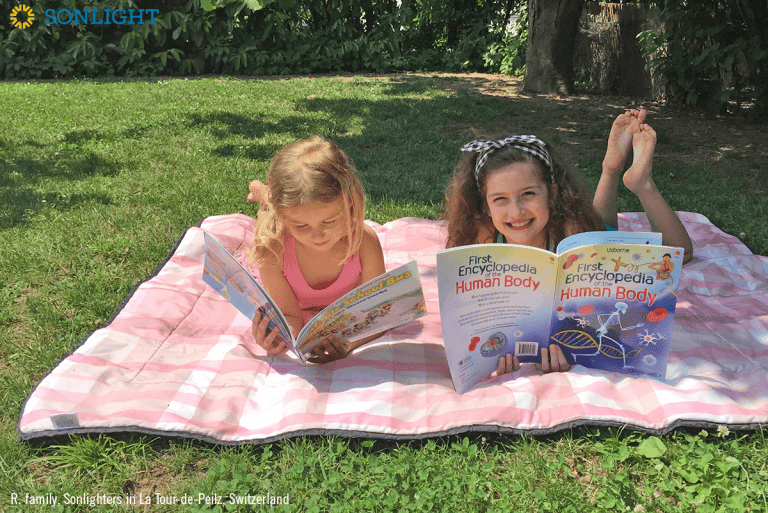
Tackling more than one science genre in a single course of study also allows for an excellent application of the spiral approach, wherein additional layers of detail are added on each time a topic resurfaces.
A Literature Based-Approach Allows for “the Joy of Discovery”
It’s worth noting, too, the discrepancy between our collective push for literacy compared to our attitude toward scientific literacy. Why is it that being well-read is celebrated in literary circles, while branching out into numerous areas of scientific study at a young age is seen as prematurely “jumping around”?
One would rarely hear the following complaint in a reading or literature class:
“My student was forced to read a short story, a sonnet, a novel, an autobiography, and a work of historical fiction. This is tackling too many literary genres! This literature class jumps around too much.”
And yet, that’s precisely what we tend to say when looking at science curriculum—we expect it to narrow in on one specific specialty, with no diversification.
But for young children, our goal in science is not necessarily to have them master any given discipline, but to introduce them to the nearly infinite world of scientific discovery, and encourage what the Science D Instructor’s Guide calls “the joy of discovery.”
Perhaps we can adjust our expectations of what primary- and middle-years science education looks like, and allow our children the freedom to enjoy as much variety in scientific discipline as we allow in our explorations of literature.
What delights will your children discover this year? Switch to Sonlight Science and reinvigorate their joy for science.


